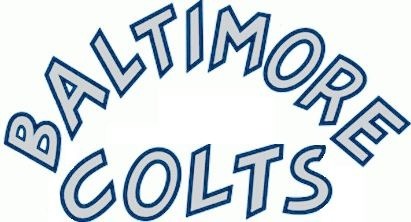The Sixties remain as one of the unforgettable decades in history. From the Beatles to the hippies, miniskirts to the landing movement, these 1960s popular trends were myriad, ranging from revolutionary, audacious, to innovative, making the era truly iconic.
The decade also witnessed the dominance of professional sports finally gaining the attention and heart of sports fans in the United States. Professional football catapulted into popularity and became the most popular sport in the country, eclipsing baseball in attendance and TV viewership.
One of the greatest teams that played during the sixties was the Baltimore Colts – the team that also produced the one of NFL’s greatest players of all time, Johnny Unitas. Here, let’s discover the history of the Baltimore Colts in the 1960s starting from their trots to some of the sports’ most memorable victories.
Where It All Began
The original Baltimore Colts were founded in 1947 in the AAFC (All-America Football Conference) after the Miami Seahawks moved to the city. The “Colts” name came from a name selection contest participated by many Baltimore fans. After the merger of AAFC and the NFL in 1950, the Baltimore Colts joined the reorganized NFL, only to be dissolved after one season in 1951 due to financial reasons and dismal performance at a 1-11 record.
Many Baltimore fans were displeased with the disbandment of the team. Fortunately, Bert Bell, then-NFL Commissioner, dared the city, challenging to sell about 15,000 tickets. A feat that the city completed in less than four weeks, proving the city’s fervor to have a professional football team. In 1953, the city of Baltimore was granted their new NFL franchise with Carroll Rosenbloom, a wealthy Baltimore native, being the principal owner of the reborn Baltimore Colts.
First Gallops
On September 27, 1953, the new Baltimore Colts played their first time ever game at Memorial Stadium, facing the Chicago Bears. They went on to win their inaugural match, shocking the Bears 13-9. It didn’t translate into more victories, however, as the team’s inexperience took a toll on them, ending the season at 3-9.
The following year, Rosenbloom hired Weeb Ewbank, former Cleveland Browns’ assistant, to be the head coach of the team. Keith Molesworth was moved to being Colt’s head scout, bringing in 12 rookies by 1955. That year proved to be successful, as the team improved their record to 5-6-1.
In 1956, Baltimore Colts signed John Unitas, who was released by the Pittsburgh Steelers the previous year. Following quarterback George Shaw’s serious injury during the team’s fourth game in the season, Shaw’s still unproven backup Unitas stepped up. He helped the team end up at a 5-7 record, winning half of their remaining eight matches in the season. In 1957, Unitas became a full-started and with the help of newly-acquired star player Jim Parker, the team registered their first winning record at 7-5, a glimpse of the incredible things yet to happen for the Baltimore Colts.
The Victory
When Ewbank became the team’s head coach in 1954, he pledged to get a championship for the city within five years. A promise he didn’t break, as the Colts got on to their first championship in 1958.
Coming from an impressive 9-3 record, they faced the New York Giants in Yankee Stadium on December 28. Regarded as one of the league’s most dramatic games, the match went into overtime with the Colts eventually winning their first NFL championship through a 23-17 victory.
Unitas’ led the team and his impressive performance in the championship game earned him his legendary status. Other players, such as Lenny Moore, Raymond Berry, Alan Amache, who scored the winning touchdown, also became instrumental in the victory.
Viewed by the national television audience, many credited the match as “The Greatest Game Ever Played” in NFL history as one of the key steps in the league’s ascent to popularity.
The team duplicated their 9-3 record in 1959, facing the New York Giants for the second time in the title game, winning it this time in Baltimore.
The Sixties
After two championships, the Colts’ performance dipped ranking either 3rd or 4th in their divisions from 1960 to 1962. Don Shula replaced Ewbank in 1963, but the team also ended up at 3rd in NFL West with an 8-6 record.
His second season proved to be successful as the team went to register a 12-2 record, with help of young stars John Mackey and Tom Matte. The Colts returned to the NFL Championship in 1964. Coming into the title leading the NFL in both scoring offense and defense, they were upset by the Cleveland Browns in the NFL Championship game at 27-0.
In 1965, Johnny Unitas was sidelined by an injury but the Colts still went to reach the conference playoffs. However, they were stunned by the Wisconsin Packers 13-10 in overtime.
In 1968, the Colts found their groove back, getting at a 13-1 record in the regular season. Their only loss came from the Browns, who beat them 30-20 on October 20. They exacted their vengeance on the Browns in the NFL championship game, trouncing them 34-0.
The team’s success in 1968 came without Unitas’ service (named MVP in 1959, 1964, and 1967) who was benched due to a chronic sore elbow. It was his replacement, Earl Morrall, who steered the team and came with a dream season, winning the league’s Most Valuable Player award.
With their impressive outing, the Baltimore Colts were favored to beat their AFL counterpart. Yet, the opposite happened as the New York Jets pulled a shocking victory in Super Bowl III held at the Miami Orange Bowl.
Despite the huge upset loss, the game served as one of the most significant games in the 1960s, playing an important role in the relentless ascent of professional football.
At the turn of the decade, the Baltimore Colts moved to the newly-formed American Football Conference. Three decades after their foundation, the team moved to Indianapolis in 1984 where the Colts legacy continues to live on.

